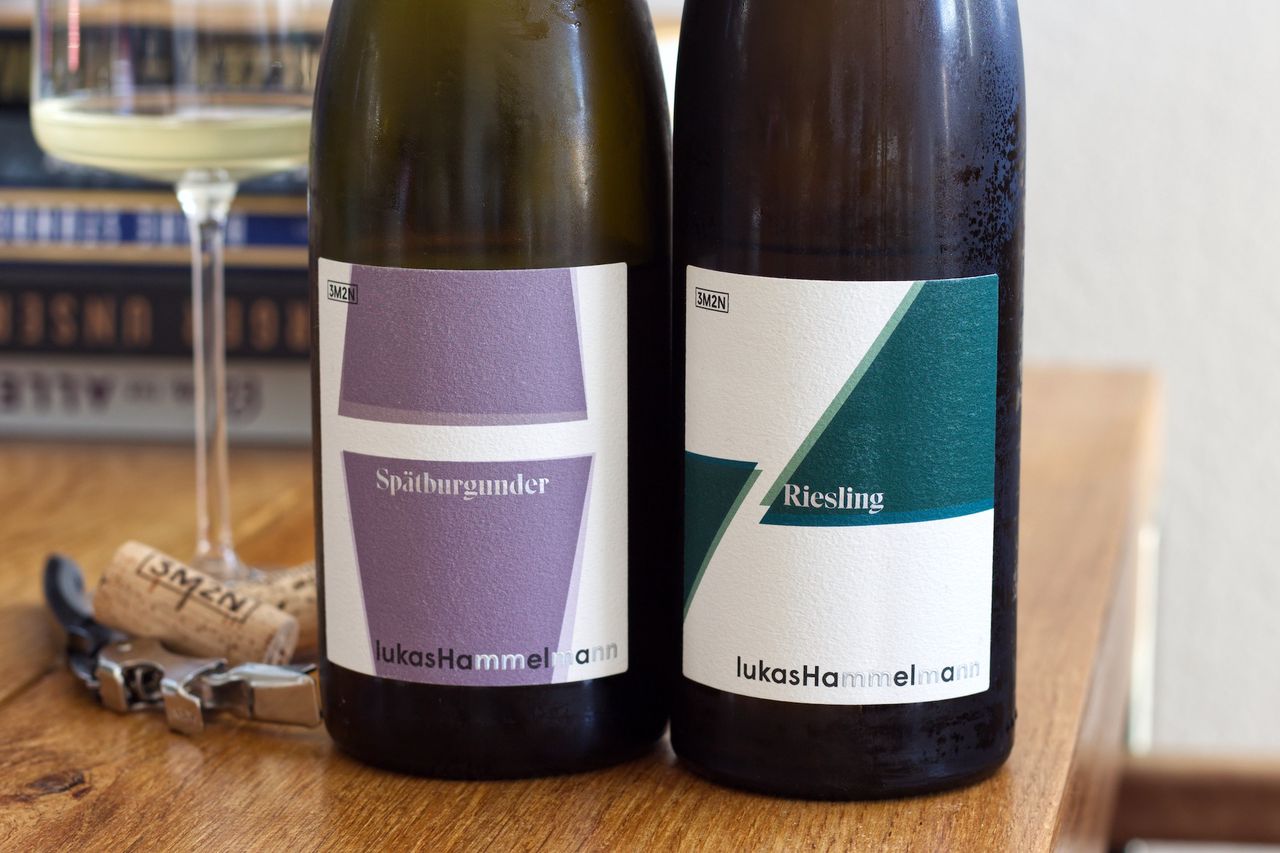Lukas Hammelmann - Mixed Letters 2020
We drink two bottles Landwein from Lukas Hammelmann: a bottle of Riesling Zimkaes 2020 and a bottle of Pinot Noir Rosé Haschdott 2020.

Landwein is anchored as a quality level in the German wine law. And it’s pretty far down the list. I find that a bit funny, because those who follow the blog may have noticed that we often drink Landwein that is not necessarily at the bottom of any hierarchy. Be that as it may, it should not be here about the meaningfulness of laws today. This is a wide field, and blindly hammering away at it without a differentiated approach does not help. The law regulates both what is allowed in the wine and what the requirements for the grapes are, as well as what may be written on the label afterwards. Wikipedia says that in this case it is the vintage and selected grape varieties. The vintner skips the official wine test and can bring wines on the bottle, which would have failed there perhaps. This can be good or bad. Let’s hope it is good here. What he doesn’t spare himself is the additional explanatory step to make the customer understand what he is actually drinking and where it comes from.
Lukas Hammelmann has decided with the vintage 2020 or 2019 at the Pinot Noir, which we do not taste today, to fill three wines as Landwein. The wines are unfiltered and not at all or minimally sulfured. Of these we drink today the Riesling Zimkaes and the Pinot Noir Rosé Haschdott. Since Lukas Hammelmann farms vineyards around Zeiskam and Hochstadt, you don’t have to be a Wordle champion to interpret the names. At least in my head Zimkaes and Haschdott sound strange and make weird associations. That may be limited to german though. Good thing it’s only on the back of the labels. Then I just never turn the bottles over. The Riesling has 12 percent alcohol and the Rosé even only 11.5.
We start with the Riesling. It smells rather tart. There’s citrus like grapefruit or pomelo on the nose, something reminiscent of black tea and a bit of stone. In the mouth, the wine is extremely fresh and has great acidity, lime and herbs. Only the tannin I’m still unsure if I like it or not. In some sips I totally like it and in other sips it lingers weirdly on the tongue. Let’s see where this goes. The citrus and acidity more than make up for it right now.
The wine is becoming more complex. There’s lemongrass and bathwater on the nose now. Charming bath water. And thankfully the tannin hasn’t fallen apart either and is still well integrated. We’ve had a few Hammelmann Rieslings, but this one stands out. When something like this is in the bottle, you can print strange names on the label. Couldn’t care less. And a day later, the wine is still really fun. The acidity and especially the clarity and depth and flavor complexity in the citrus notes are really nice.
The rosé, on the other hand, puzzles us for a short time. It smells totally unfruity and fruity at the same time. I know, strange description, but that’s how it arrives in our brain. And even when drinking I do not really know what to do with it either. The structure is nice, it’s fresh and it has length too. Air actually helps a bit here. Decanting or slurping aloud is the question and since no one else is sitting at the table, we slurp. There is raspberry and other red berries now. Fruity, however, I would still not say. It takes a bit until we get warm with each other. But this could turn into a great friendship.
And later in the evening it stays that way. I totally like the structure and freshness. It’s serious and easy-drinking at the same time. It just drinks well this Rosé. Nevertheless, I like the Riesling better today. Overnight, this changes a bit. There’s strawberries and raspberries on the nose now, some lacticness, further the structure and a funky natural impact. Now they are on par.